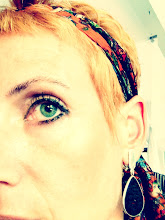(Ceylonese proverb)
Dear readers,
These days I had
the fantastic, overly exciting opportunity to pick up 500 newly printed books from my printing
agent. What a feeling! The book – just as the first one – talks about Ayurveda.
So I am buried head to toe in Ayurvedic issues and questions people come up
with.
Often though I also hear
the following question:
What is Ayurveda anyway?
Ayurveda is a
general philosophy of life and a teaching about the healing of disease , but
above all, their prevention and thus avoidance ( Health = absence of disease ). Directly translated the Sanskrit word means "The science of long life". Ayurveda originated over 5000 years ago by contemplation in India and is
thus considered to be the oldest healing science in the world . Already in the
6th century this natural philosophy found its way to Sri Lanka. At the
time, the Ceylonese kings were still doctors. On the island, there are 1460 medicinal
plants, 70 of which are endemic.
How does Ayurveda work ?
In contrast to our
Western medicine in Ayurveda body, mind and soul form a unit, man is viewed
holistically. Balance is created by living in harmony with the laws of nature
. We are an inherent universe and our physical and mental balance is determined
by:
• Nutrition
• Lifestyle
• Relaxation and
meditation
• Yoga and
breathing exercises
• Holistic
diagnosis
• Medicinal Herbs
and Ayurvedic medicine as well as
• Cleaning and
rejuvenation measures
We consist - as
well as nature - from the elements earth, water, fire , air and ether ( space )
. In Ayurveda, these elements are summarized as the so-called
Doshas
Each two of them
combine to form a bio energy. Every person contains all the doshas , most of us
are, however, determined by two doshas. More rarely occurs that someone is
determined by only one or by Tridosha (all three doshas) . Each dosha also is
associated with certain positive and negative characteristics .
KAPHA : Earth and water are responsible for the structure and stability of our
body, as well for his defense force . Kapha is the principle of inertia.
PITTA: Fire and water unite in the metabolic principle. Pitta regulates all
biochemical changes, such as digestion or body temperature. In a figurative
sense, it is also responsible for managing emotional influences and
impressions.
VATA : Air and ether form the principle of movement . Vata controls all the
mental and physiological activities in the body, especially the respiratory system
and our neurological functions.
Every human being
is made up of an individual combination of physical, mental and emotional
characteristics that create his special constitution. The preservation of our
personal constitution and a good digestive fire rule on health or disease.
Why should I undergo a Ayurvedakur regularly?
An Ayurvedic cleansing
(Panchakarma = 5 ways of cleansing) releases the body from waste products and toxins, levels out the doshas
, strengthens the immune system and gives us balance. Ayurvedic treatments serve healthy persons as a cleansing and relaxation cure to maintain health .
The energies obtained from the cure remain usually - depending on lifestyle - for
approximately 6-9 months. For ailing persons Ayurveda brings cure or
stabilization.
In order to obtain
the success of the treatment and possibly to prolong it, there are easy-to
-follow, useful tips for your home. These can be found for example in my book
"Ayurveda at home " (published in Sri Lanka , available at Lanka
Princess Hotel or directly from the author, German ). These suggestions are clearly
described and easy to understand.
I recommend a
minimum of 12 - day treatment in order to obtain the full effect and give the body the necessary time to adjust and heal, which can treat among other "common"
diseases or conditions such as the following with great success:
• Nervousness and
insomnia
• Indigestion
• Headaches and
migraines
• Eczema and other
skin diseases
• Heart and
circulatory problems
• Sinus infections
(sinusitis)
• Arthritis
• Stress and burn-
out syndrome
• Allergies
• Stomach and
intestinal diseases
• Depression
• Over - or
underweight
• Tinnitus (sudden
hearing loss)
• menstrual and
menopausal complaints
• Back pain
But also far more
serious diseases can be relieved, improved or even be healed with Ayurvedic
treatments. As a consequence, drugs can be reduced or eliminated. Ayurveda has gained an
excellent reputation of good results in the treatment of cancer patients.
Professor
Ranaweera, Director of the Ayurvedic Research Institute in Maharagama, Sri
Lanka, states: "We are particularly pleased with our treatment of type 2
diabetes, people who took Western medicines without success, here in Sri Lanka with
only four different herbs got their diabetes under control."
Ayurveda, the
science of life is beneficial for every type of person in any state. And the
recovery and relaxation effect when you find yourself after your treatments in a
bathrobe on the balcony of your hotel room in the shade, maybe even watching
big drops of tropical rain fall on fresh green grounds is simply unbeatable.
Curious to know your Dosha? Just do the following, very simple test and find out. This of course is not a detailed consultation, but it may give you an initial idea. I will post on Doshas in more detail in the future.





